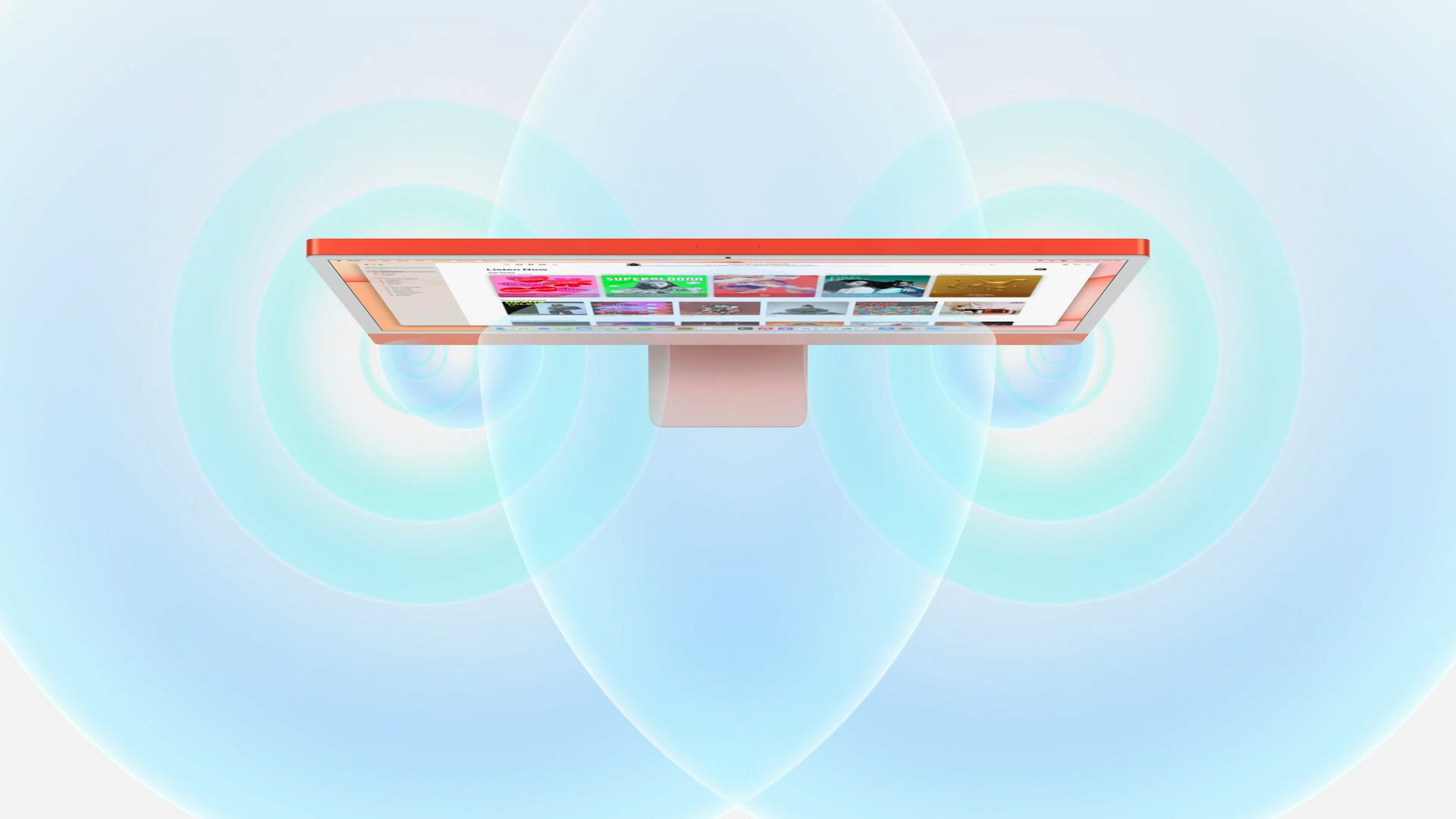![]()
Apple yesterday announced a
completely redesigned 24-inch iMac with the M1 Apple silicon chip. The new iMac, the first major redesign of the Mac desktop computer since 2012, has several changes compared to the previous generation.
In the aftermath of the event, a few new features and tidbits may have slipped under the radar, so we’ve compiled this list of some of the less-talked-about features and changes of the new 24-inch iMac.
First Mac with Built-In Spatial Audio
The 24-inch iMac is the first Mac to feature built-in Spatial Audio with Dolby Atmos. This is enabled by six brand new high-fidelity speakers that work in junction with force-canceling woofers. Apple says in tandem, the new speakers and woofers create "the best speakers in any Mac." Spatial Audio is available on compatible iPhone and iPad devices with Dolby Atmos content, and now it's coming to the Mac for the first time.
First iMac with WiFi 6
The M1 Apple silicon MacBook Air, MacBook Pro, and Mac mini released in November
were the first Macs to support the new and faster WiFi 6 protocol. With M1 now on the iMac, the 24-inch iMac becomes the first Mac desktop computer to support WiFi 6.
Headphone Jack on The Side
The new 24-inch iMac features a radically thinner design compared to the previous generation. While visually pleasing, this new design did present a challenge for where to place the 3.5mm headphone jack. Typically, the headphone jack would be placed on the back of the iMac, but with the new 24-inch model, the jack is placed on the left side.
Ethernet Port on Power Adapter
Another problem the new thin design of the iMac presented was where to place the Ethernet port. Apple's solution to the dilemma is to place the Ethernet port directly into the power adapter. Apple says this new "cool new innovation" means users can keep their desks less cluttered, while still enjoying the benefits of Ethernet.
No SD Card Slot
Previous generation iMac models featured an SD card slot reader on the rear. The new design of the 24-inch iMac made this a challenge. In theory, Apple could have easily placed the SD card reader on the side, like the headphone jack, but instead, it instead decided to remove it entirely.
Of course, these are just a few of the many new features coming with the 24-inch iMac. You can learn more about the new iMac and everything else Apple announced at its "Spring Loaded" event using our
roundup.
Article Link:
New iMac Tidbits: Headphone Jack on Side, Ethernet Port on Power Adapter, Spatial Audio and WiFi 6 Support, No SD Card Slot









